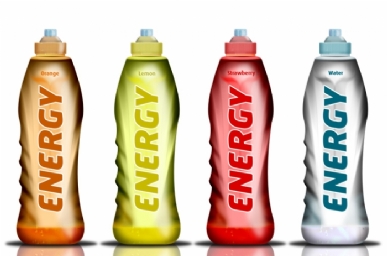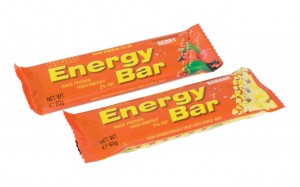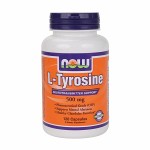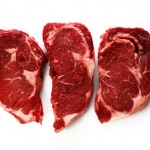By Anthoney J. Andersen – Steroidal.com
After a strenuous workout, sports drinks can make for an exceptional fuel source to hydrate your body because of the mix of carbohydrates and water.
According to WebMD, for exercises that last anywhere from 60 minutes to a few hours, drinking carbohydrate beverages can dramatically increase endurance performance compared to drinking water.
A person can expect an improvement in endurance of 20 percent or more in workouts lasting over 90 minutes.
Most sports drinks offer a mixture of carbohydrate sources, such as the sugars sucrose, glucose, fructose and galactose.
Some beverages may also contain maltodextrin, a complex carbohydrate composed of several glucose units.
According to Healthline.com, sports drinks that offer a blend of carbohydrates, such as sucrose and glucose, rather than a single carbohydrate source may improve the amount of carbohydrates that eventually become transported to the muscles for fuel.
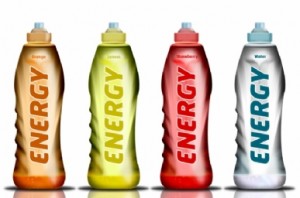 By offering your intestinal tract a variety of sugars, carbohydrate absorption will increase and allow for different sugars to be absorbed through different routes.
By offering your intestinal tract a variety of sugars, carbohydrate absorption will increase and allow for different sugars to be absorbed through different routes.
This means that more carbs will make their way to your muscles as fuel for exercise or sports performance.
A multiple-sugar sports drink has the ability to enhance performance in a race-like endurance effort more than a single-sugar sports drinks.
A study conducted at the University of Birmingham, England, took eight cyclists on three different occasions, and had them complete a two-hour glycogen depletion ride on a stationary bike, followed immediately by a simulated time trial that lasted one hour.
In one trial, subjects consumed only plain water. In a second trial, they consumed a glucose-only sports drink, while in the third trial they consumed a glucose-fructose sports drink containing the same total concentration of carbohydrate as the other sports drink.
The study concluded that on average, the subjects completed the glucose-fructose time trial eight percent faster than the glucose-only trial and 19 percent faster than the water only trial.
In addition to carbs, sports drinks also contain a high level of electrolytes. Sodium, the electrolyte that is lost the most during sweat, helps retain fluid balance in the body while promoting the acuity of fluid in your intestines and improving hydration.
DRINKS TO CONSIDER
- Most commercial sports drinks supply a blend of sugars: four to nine percent solution, or 13 to 19 grams of carbs, per eight ounces, according to Livestrong.com.
- Consuming one-and-a-half to four cups per hour will provide your body with both the fluid intake and carbs that you need to power through those intense physical exercises.
- Choose your favorite beverage flavor as a way to encourage yourself to drink the appropriate amount.
- Even though water is essential for the body to function, it cannot provide the carbohydrate intake that your body craves in order to push your body’s endurance levels to its peak performance.
- Drinking before and after exercise is also an important factor in maintaining proper hydration levels.
LOW-SUGAR SPORTS DRINKS
Some runners choose to consume low-sugar and low-calorie sports drinks under the guise that these beverages are somehow healthier.
According MedicineNet.com, these drinks are not healthier, but they are less effective because they provide less energy for the muscles.
However, some research proposes that low-sugar sports drinks with added protein are as effective as traditional high-sugar sports drinks.
A study by researchers at James Madison University found that a sports drink containing carbohydrate and protein in a four-to-one ratio and with 55 percent less sugar and 30 percent less calories than a conventional carb-only sports drink, enhanced endurance performance equally compared to that conventional, high-sugar sports drink.
So, in other words, if you decide to consume a sports drink with less sugar, then make sure you add protein to it in order to achieve a more superior performance.
ALTERNATIVE ENERGY SOURCES
There are a plethora of energy bars to choose from, including high-protein bars and bars marketed specifically toward women.
High-carbohydrate bars make great choices for carbohydrate fuelling both before and after a long workout.
According to Livestrong.com, these bars contain 70 percent of their calories from carbohydrates.
Keep these following suggestions in mind when choosing an energy bar:
- Select a bar with about 25-40 grams of carbohydrates and less than 15 grams of protein.
- Examine the label for fat content because some bars are high in fat, which slows digestion, and is not helpful during exercise.
- Consume one bar at least an hour before a long workout.
FRUIT
Real food, such as fruit, can also be used for fueling a workout. Fruit, whether dried or fresh, supplies a shot of carbohydrates that is well digested.
Most fruits contain roughly 15 grams of carbohydrates per serving. A serving of dried fruit equals about one-quarter cup, or the equivalent of fresh fruit – two nectarine halves or four dried plums, for example.
According to the American College of Sports Medicine, you should aim for one to two servings before a workout and two to three fruit servings for every hour of running.
While consuming your edible energy sources, remember to consume plenty of water to stay hydrated and remain active.
Stay strong.
References:
[1]. “University Drinks to Gebrselassie’s Marathon Achievements.” 2010. July. 9. The Birmingham Brief.
[2]. “Re-think Your Drink.” 2012. August. 9. The Breeze.




